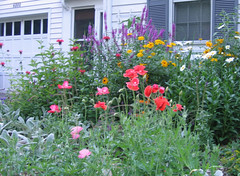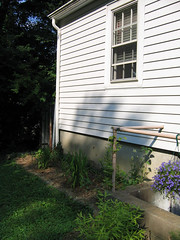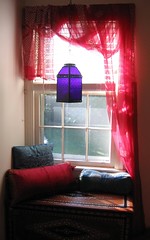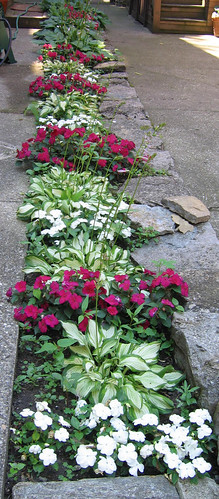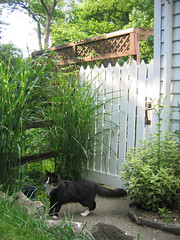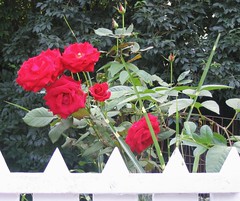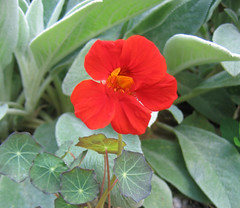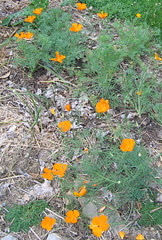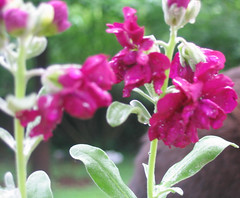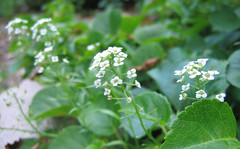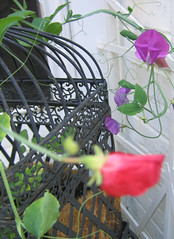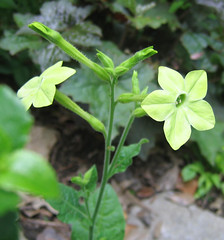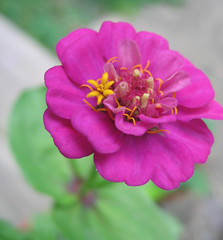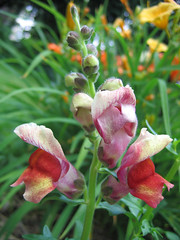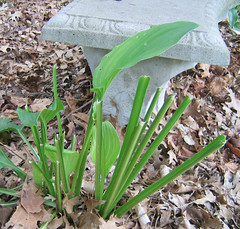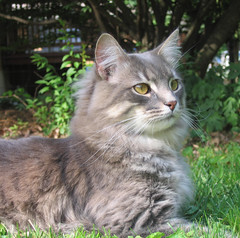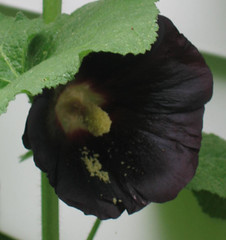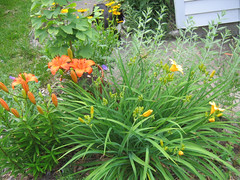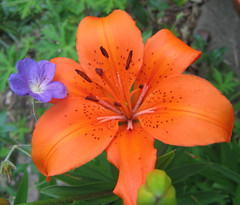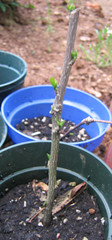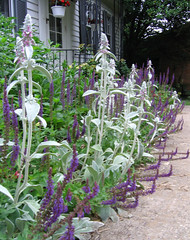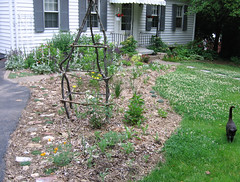The Grand Homes, Gardens, & Grapes tour kicked off the local garden tour season. As evidenced by the descriptions in the tour guide, however, the event was primarily about houses. The historic Licking Riverside district is peppered with gorgeous old houses that have been homes to persons of local and national importance. From the comments and behavior of my fellow tour-goers, I gathered that they were primarily interested in the Grand Homes. While some of the buildings were admittedly breathtaking, I was there for the Gardens. I saw nary a Grape, but the day was a sweltering 93 degrees and I would have preferred a cold beer over warm pinot noir anyway.
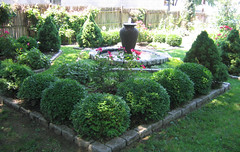
I bought my ticket at the Baker Hunt Center shortly before the tour began and double-timed it to the most promising garden as soon as the clock struck noon. I was not disappointed. I entered the garden at 719 Garrard Street through a shady passageway between the house and its neighbor. The original garden is a
shade garden, sheltered by a massive tree and the house. The demolition of the alley house opened up a sunny expanse that has been used to its full advantage. A formal rose and clipped hedge parterre and
fountain occupy the center of the space. While the parterre was dramatic, my favorite part of the garden was the
cottage garden style planting occupying the sunniest portion of the yard.
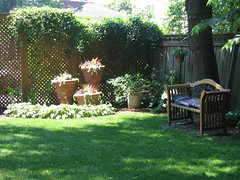
Six-o-seven to six-o-nine Greenup street is a Victorian house carved up into three apartments. The owner lives there and maintains a gorgeous, private shade garden in the cozy backyard. The balcony overlooks the scene, complete with a
fountain and pond. I exited the garden on the other side of the building and a
look back at the retreat made me loathe to reenter the sunlight.
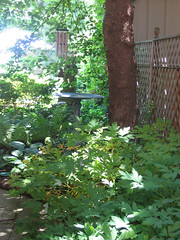
My very favorite garden on the tour was not the largest or the most elaborate, but had the most character. I was sure that 310 Garrard Street would delight when I spotted a very persistent robin at the bird bath in the alleyway. He would flutter away as each visitor approached his perch, but was reluctant to stay away from the charming scene for long.
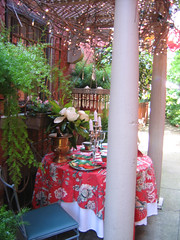
The garden is a treasure trove of plants and structures. The long line of peonies (leading toward the birdbath in the photo) must have been spectacular in bloom. The courtyard at the end of the path is overlooked by an enormous
southern magnolia. The gardener confided in me that his secret for maintaining this tree so far north of its zone is to cover it with a giant burlap sack each winter. A few of the giant blossoms festooned an inviting dining area. Even the more practical elements of the garden were a pleasing to the eye, like the lovely
potting table.
The mansion at 412 E 2nd Street created quite a stir with the crowd. The enormous house was put through an extensive renovation. The result is an elegant masterpiece, stuffed to the gills with Asian furniture. Although I enjoyed the interior, my gaze kept drifting
out the window. I exited as soon as was politely acceptable to explore the garden.
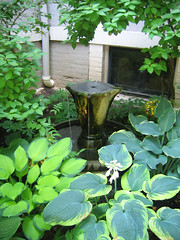
A shade garden is nestled against the north walls. I was tickled by a burbling water feature tucked into a cranny for no reason at all. It is almost hidden by the house walls and greenery, but the sound produces a cooling effect far beyond the viewing area. I saw a number of grand fountains and waterfalls during the tour, but this water feature was my favorite.
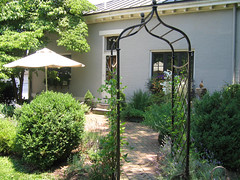
The yard featured a few distinct areas. To the west, a wisteria covered
arbor offered shade and cushioned comfort. The expanse of lawn, edged with a cottagey border, offered views across the river. To the east, through a charming arch, one could dine in the sunshine while inhaling the fresh, clean scent of lavender. The
window box overlooking the patio was an absolute riot of color. As nice as the mansion was, if I lived there, I would spend all my time in the garden. Perhaps they’ll let me move into the little alley house next to the patio?
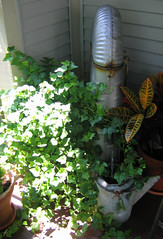
By the time I reached the mansion, the day had become even more hot and muggy. I rounded out the tour with a viewing of a retro-modeled townhouse at 122 Shelby Street and Victorian style home at 207 Garrard Street. The townhouse garden was very neatly manicured, but it was the fountain, converted from an old pump and placed on a balcony that caught my fancy. At 207 Garrard Street, the homeowners had placed not
one, but
two, water features in the back garden.
Interestingly, almost every garden had a water feature, even if it was simply a fountain on the balcony. Water, water, everywhere, but not a drop to drink! (Except for a cup from the kind man at 607-609 Greenup Street.) The water features, as evidenced by my photos, garnered my attention. I also found that my favorite gardens not only had water, but were laid out in a manner that invited exploration. Even just a single hidden nook adds an element of surprise and drama.
I left the tour hot and sweaty, but brimming with ideas. In fact, Mike came home that afternoon to find me in the backyard, adding
curves to a formerly
straight border. He asked me if I now found my garden lacking in comparison to those I had viewed that day. Quite truthfully, I told him, “No, I now see just how good mine is.” And that’s how one should leave a garden tour: inspired, not envious, no matter how Grand the Gardens.
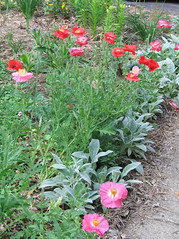 This season, I used the poppies as place-holders for the Cerise Queen yarrow in the magnolia bed. They were itty bitty plants when I tucked them into the straw in early May. The poppies have exceeded all my expectations and grown into floriferous monsters. In fact, with their flushed, silken petals, they are stealing the show from the established perennials. The visitors to my garden all admire the poppy patch.
This season, I used the poppies as place-holders for the Cerise Queen yarrow in the magnolia bed. They were itty bitty plants when I tucked them into the straw in early May. The poppies have exceeded all my expectations and grown into floriferous monsters. In fact, with their flushed, silken petals, they are stealing the show from the established perennials. The visitors to my garden all admire the poppy patch.